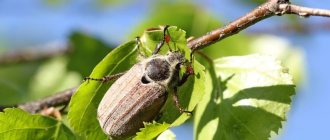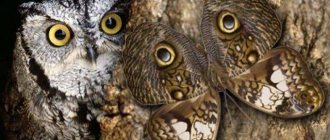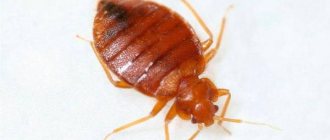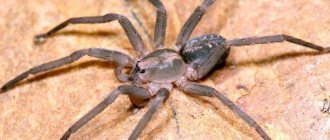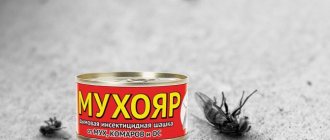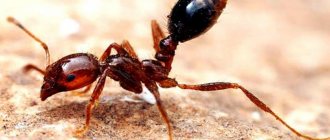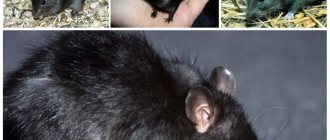Description and appearance
Termites are an infraorder that is part of the cockroach order. According to scientists, insects appeared on Earth more than 200 million years ago. They are heat-loving and are found in tropical and subtropical climates, which is why they are also called tropical ants.
Appearance
In termites, like other social insects, the size and appearance of an individual depend not only on the species, but also on its membership in a particular caste (females and males capable of reproduction, workers, soldiers). Termites range in size from 2.5 mm to 50 mm. Common features that are present in all varieties:
- Visually, the body consists of a large head with long antennae and a torso.
- The body is a chest, consisting of three segments with a pair of legs on each, and an abdomen.
- Reproductive individuals are always larger than their relatives. They have a dark body covered with a durable shell and 2 pairs of wings, which they get rid of after their only mating summer.
- Working individuals look like larvae at the last stage of development; they have a soft, light body.
- Soldiers are most often dark brown, but the color can also be yellow, orange, reddish, almost black. Their distinctive feature is the clearly visible powerful mandibles located on the head. It is the soldiers who look very similar to ants.
Despite the presence of wings on some individuals, termites are poor fliers. They fly for a very short time and solely for the purpose of finding a partner and mating.
Types of termites and habitat
According to the current classification, there are just over 3,000 species of termites on the planet, grouped into 12 families. The most numerous and widespread families:
- Termitidae;
- Kalothermitidae;
The habitat of termites includes all continents except Antarctica. The population density varies greatly. The most species (more than 1000) live in Africa, the second most common is Asia (there are 435 species). There are approximately 400 species living in South America. Interestingly, here you can most often encounter poisonous fire ants, which are similar in appearance to termites. There are about 360 species found in Australia. The list is completed by North America (about 50 species) and Europe (about 10 varieties). As for natural areas, termites live both in tropical rainforests and in deserts and semi-deserts.
Only 3 types are common in Russia:
- the yellow-necked (yellow-breasted, yellow-whiskered) termite is found in the Sochi region and further south along the Black Sea coast;
- Far Eastern (Japanese) termite - lives in the Vladivostok area, usually in the area adjacent to the port, which indicates that the insects most likely arrive on ships with cargo from Japan, China and other countries;
- photophobic (harmful) termite - most often found in the North Caucasus.
A nest of white ants is called a termite mound. What an insect home looks like and where it is located depends on what type of insect built it. A home for termites can be a simple hole in the soil or in a fallen tree, or a complex structure raised above the ground, equipped with a ventilation system, thanks to which a constant temperature is maintained inside, regardless of the weather conditions outside. In Africa there are the largest and most complex termite mounds, built by insects of the genus Macrotermes. The height of these buildings exceeds 10 m.
Termite mounds
Most often, a termite mound consists of several chambers for different purposes. These are the compartments where the queen and king live, where the larvae grow and develop, where food is stored, etc.
[edit] Termite mounds
Termites build nests - termite mounds (more precisely, termite mounds are built mainly by tropical species, while the rest usually simply dig a system of burrows in the ground). The largest termite mounds can reach a height of 12.8 m, up to 3 m in diameter and a weight of up to 12 tons.
The walls of a termite mound are built from a combination of excrement, shredded wood and saliva. The termite mound has places for growing fungal gardens, keeping eggs and young larvae, reproductive individuals, as well as an extensive network of ventilation tunnels that allow maintaining an almost constant microclimate inside the nest.
The outer walls of a termite mound are usually watertight to prevent flooding from tropical rainstorms and can be up to 20–30 cm thick, although they have small holes for ventilation.
The termite mound performs not only a protective function. It also maintains a favorable habitat for these ancient insects. Termites try not to come into contact with air, since their cuticle is very thin and does not retain moisture. If they need to cross open space, they build shelter tunnels from compressed earth and excrement. Therefore, termites are more active at night. Thus, the termite mound functions as a warehouse, a birthing chamber, protection of the colony from predators, a greenhouse for growing termite-edible fungi, and protection of termites from sunlight and rain.
The internal space of the termite mound cone is penetrated by numerous passages that perform the functions of water supply, drainage and ventilation; the air in them is humidified and cooled, since termites and especially the oviparous queen are very sensitive to air humidity.
At a distance of 15-30 cm from the soil surface there is a round chamber filled with layers of woody soft matter similar to paper. This chamber is called a nest, since its cells are filled with millions of larvae. The temperature of the “nest” is several degrees higher than the general temperature of the termite mound, which is practically constant and does not depend on external fluctuations. On the sides of the “nest” there are chambers for eggs; below the “nest” there is a room with the “queen”. Below are storage areas in which food is stored - chewed wood and grass. The upper parts of the termite mound cone can be used as chambers for growing fungi. In the soil in all directions, many meters from the termite mound, there are passages that lead to sources of wood used by termites for food.
Social structure and hierarchy
Like other social insects, termites live in families. The size of the community can vary from several hundred to several million individuals. Hierarchy of the termite family:
- queen;
- king;
- soldiers;
- working individuals.
The vast majority of termite families have one queen . This is a female who performs a single task - she lays eggs, from which new family members appear. In addition to the queen, every family has a king. He lives in the same compartment with the queen, regularly mating with her, unlike ants, in which mating occurs once, after which the male dies.
Among the workers, termites have approximately equal numbers of males and females. This is another important difference from ants, whose workers are exclusively female. Working individuals perform almost all duties. They are engaged in the construction, arrangement and repair of termite mounds, obtain food, and take care of the queen and larvae.
Soldiers are a type of worker whose main goal is to protect the colony (primarily from ants). They are anatomically adapted for this - they have a large head with well-developed jaws.
Most often, termites have one pair of reproductive insects in a family; soldiers, depending on the variety, can be from 2 to 25% of the total number and the majority are working individuals.
Founding of the colony.
Also on topic:
PROTOZOTS
New colonies are founded by winged males and females. In the tropics this usually occurs at the beginning of the rainy season. They fly out of the parent nest in a swarm through exits made by workers or nymphs. Having flown from several to several hundred meters, they land, shed their wings and form pairs. The female attracts the male with the volatile secretion of the abdominal gland, after which he follows her, together they dig a hole, seal the entrance to it and mate inside. A few days later the first eggs are laid. The parents feed the nymphs that hatch from them, and after molting several times, they become workers or soldiers. Winged individuals will appear in the colony only when it “ripes”, i.e. will become densely populated - usually in two to three years. Formed workers take upon themselves all further care of obtaining food and building a nest.
Nutrition
Termites feed on cellulose in any form. Their diet includes:
- wood;
- humus;
- grass;
- leaves, plant roots;
- excrement;
- paper, cardboard;
- cotton;
- linen;
- glue;
- cellophane film.
Termite infestation
Cellulose is a product with high energy value, but is very poorly digested. Termite guts contain a variety of microorganisms that produce special digestive enzymes that allow the insects to easily digest all cellulose-containing materials they eat.
Some species of insects grow termitomyces mushrooms in their feces, the size of which is more than significant (the diameter of the cap can reach 1 m). The spores of eaten mushrooms are not digested in the intestines, are released in excrement and germinate again.
What danger do termites pose to homes?
The fungus carried by termites is dangerous not only for the owners of the building, but also for the structure itself.
Since pests live inside materials, they plant mold spores deep inside the wood. It is almost impossible to remove mold from there and over time the material becomes unusable. The problem is that termites are quite difficult to detect. This can only be done during the summer period. And if you have a whole colony of termites living in your building, then the damage they will cause to the wood will be significant, especially if you do not know about the existence of termites in your house for a long time.
The presence of these insects in your home is indicated by the following factors:
- Scattered wings on the floor;
- Slightly visible holes in wood and drywall;
- Mounds on the floor.
At the same time, all of these factors may indicate that other insects may be living in your home.
The important thing here is to understand how to identify a termite. And this is written above. If your suspicions are confirmed and termites actually live in your house, then do not take any action on your own. Contact a company that specializes in termite removal and talk to experts in the field.
Reproduction and lifespan
Reproduction of termites, which live exclusively in warm climates, occurs year-round. Only the periods of mating summer occur at a certain time of the year, the most comfortable for each type of insect. During the summer, young females and males mate, and then each pair selects a site to form a nest. They dig up the chamber and stay in it. There the female lays her first eggs.
At first, the queen lays 20–40 eggs daily, but over time the number increases. A mature queen can lay several thousand eggs per day. Her abdomen swells greatly, and the female becomes many times larger than any member of the colony. It cannot move on its own, so worker termites move it when necessary.
The larvae emerging from eggs are similar to adult insects, but smaller. Since termites are insects with incomplete metamorphosis, the larva develops into an adult termite without passing through the pupal stage. Before this, the larva molts from 5 to 8 times, depending on the species. Belonging to one or another caste in some termites is determined genetically, in others it depends on what the workers fed the larva and what pheromones they released.
Having become an adult, each individual performs its own functions. Reproductive insects go into mating season at the right time, and the cycle repeats.
The lifespan of insects depends on the species and belonging to a particular caste. Workers and soldiers rarely live more than 1-2 years, while a queen can live 20 - 30 years, and sometimes longer.
Harm from termites
Termites do not pose a threat to human life. They do not carry pathogens of dangerous diseases, do not attack, and do not drink blood. The insect can bite, but only if you destroy the nest with your bare hands. Contact with termites or their excrement can cause allergies in some people. In addition, living in less than clean conditions, insects can carry a variety of bacteria on their bodies.
Damage
The presence of termites in a home threatens owners with significant damage. A large colony can seriously damage wooden structures, which will cause the building to fall into disrepair. Wooden furniture and interior items, wallpaper, books, paintings, and textiles will be at risk. The problem is aggravated by the fact that termites attack wood from the inside, and for a long time people are unaware of the presence of insects or their harmful activities. In addition, pests carry mold spores, facilitating its spread.
What danger do termites pose to people?
When a person finds termites in their home, they naturally wonder if they are dangerous to humans.
Of all the termite species, only soldiers bite. Sharp massive mandibles that can sometimes terrify humans. However, termites only use them to protect their nests from ants and to resolve territorial disputes with other termites.
The termite itself will not attack you, but if you want to destroy its nest, only then will it show aggression and bite you. Termites do not consider human body and skin as food.
Termites are not carriers of dangerous diseases and infections. But contact, if any, will leave skin itching and burning. Also, as you know, termites do not live very cleanly and can carry bacteria on their bodies.
Termites also love a humid climate, from which we can understand that mold is an ideal environment for the growth and development of fungus. Termites can carry residues and pieces of mold on their bodies. If a person breathes mold for a long time, there may be a problem with the respiratory tract.
